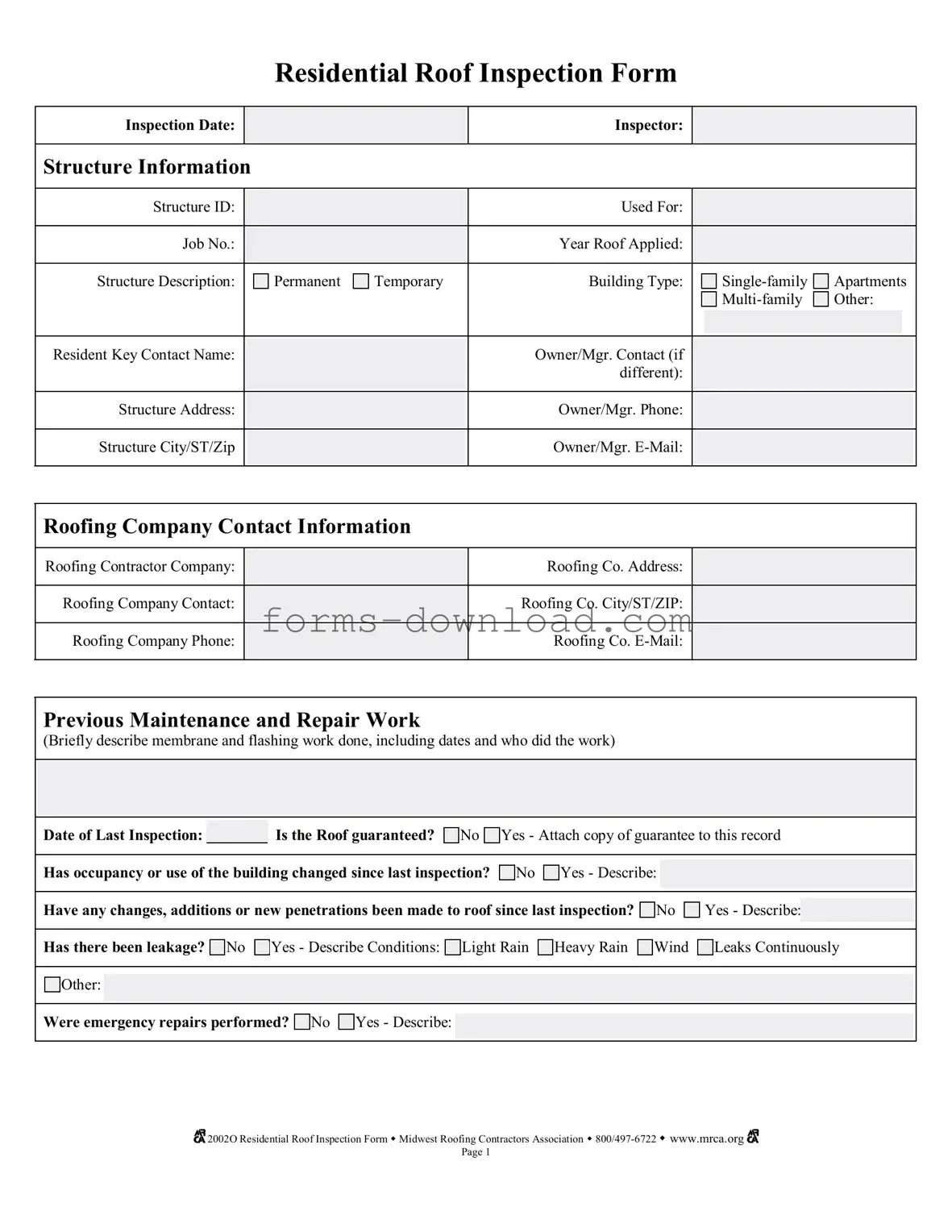The Roof Inspection form serves as a vital tool for assessing the condition and integrity of residential roofs. Designed to gather comprehensive information, it begins with essential details such as the inspection date, inspector’s name, and the structure's identification. This form captures the specifics of the building, including its purpose, type, and description, ensuring that all relevant parties are informed. It also includes contact information for both the owner or manager and the roofing contractor, facilitating communication throughout the inspection process. Notably, the form addresses previous maintenance and repairs, prompting inspectors to note any past work on the roof, which can be crucial for understanding its current state. Questions regarding changes in occupancy or roof modifications since the last inspection help identify potential issues that may have arisen. The form also inquires about any leakage, emergency repairs, and the overall conditions experienced during the inspection, such as heavy rain or wind. The detailed coding system—ranging from good to poor—enables inspectors to categorize various roof components, including the interior roof deck, exterior walls, drains, and penetrations. This structured approach not only aids in identifying immediate actions required but also ensures that all observations are documented systematically. Furthermore, the inclusion of a photographic record section allows for visual evidence to be attached, enhancing the thoroughness of the inspection. Ultimately, this form is not just a checklist; it is a comprehensive record that supports the ongoing maintenance and safety of residential roofs.


 2002O Residential Roof Inspection Form w Midwest Roofing Contractors Association w
2002O Residential Roof Inspection Form w Midwest Roofing Contractors Association w 

 2002O Residential Roof Inspection Form w Midwest Roofing Contractors Association w
2002O Residential Roof Inspection Form w Midwest Roofing Contractors Association w 

 2002O Residential Roof Inspection Form w Midwest Roofing Contractors Association w
2002O Residential Roof Inspection Form w Midwest Roofing Contractors Association w 

 2002O Residential Roof Inspection Form w Midwest Roofing Contractors Association w
2002O Residential Roof Inspection Form w Midwest Roofing Contractors Association w 

 2002O Residential Roof Inspection Form w Midwest Roofing Contractors Association w
2002O Residential Roof Inspection Form w Midwest Roofing Contractors Association w 